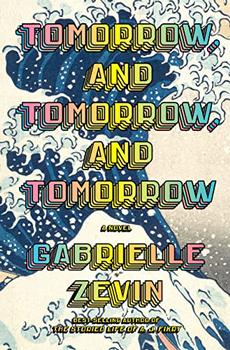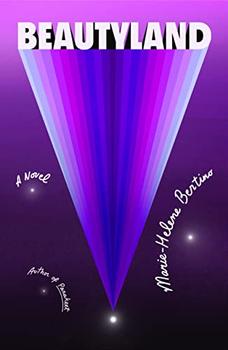Summary | Excerpt | Reviews | Beyond the book | Read-Alikes | Genres & Themes | Author Bio

Critics' Opinion:
Readers' Opinion:
First Published:
Nov 2022, 256 pages
Paperback:
Aug 2023, 256 pages
 Book Reviewed by:
Book Reviewed by:
Erin Lyndal Martin
Buy This Book
The edge is a shantytown filled with gold seekers. We are fugitives, and the law is skinny with hunger for us. You've almost certainly never heard this cryptic phrase before, but after reading Kevin Wilson's Now Is Not the Time to Panic, you won't forget it. The story follows two teenagers who make a poster featuring that line accompanied by drawings, and post copies all over their small town of Coalfield, Ohio. As soon as I read that description, I knew I had to read this book. I also came of age as an artsy, counterculture girl in a small town, and the novel brought back the transcendence I found in creative expression. I thought back to the things that my few friends and I did—the puppet show parodies of Lord of the Flies, the alter egos we created to email rock stars and the time we formed a performance art troupe that never did anything. (We still put it on our college applications, though.)
That zeitgeist is never far from my mind, and Kevin Wilson brought it back with new color and clarity. As the book opens, it's summer, and 16-year-old Frankie meets Zeke, a new kid in town, at the pool. Despite their social anxiety, the two bond quickly. While they often kiss, their relationship never gets more physical than that. Instead, the kissing is a mere detail in their unspoken mission: to ignore their parents' divorces and rural banality by making a single piece of art that they distribute everywhere. Their goal is to make something that people will speculate about but not understand. Wilson doesn't attempt to explain the poster or define the phrase emblazoned across it or give it purpose beyond what it is. And yet, we readers can feel the importance of the teenagers' quest because we remember making things that were important to us.
Wilson makes the story so compelling that I risked injury as I couldn't put it down while walking around my apartment. The bond that Frankie and Zeke have, formed in creativity and secrecy and the feeling of finally being understood, is completely authentic. I especially liked how the characters don't lose their awkwardness or anxiousness. Frankie worries that Zeke will move back to Memphis and thinks about having sex with him, but feels grossed out by the prospect. She struggles to explain their relationship to her mom, who knows nothing about their secret project. Zeke doesn't confide all of his family problems to Frankie, and sometimes his anger about them breaks through.
As they put up the posters, they don't get the reaction they expect. Some people associate the words with devil worship, and a story about a van full of Satanists circulates. Again, this was familiar—in my small town, my sister was accused of devil worship for using a Ouija board at a high school party. Other people start making their own versions of the posters, imitating the artwork to suit their own purposes.
As we watch the repercussions spiral out of control, we consider a larger question about art: are we ultimately responsible for the effects of what we create? If the impact our art makes is bigger, deeper and darker than we ever expected, does that change the power of the art itself? Frankie and Zeke argue about these things, whether to admit they're behind it all, and if they need to stop putting up the posters. I loved that all of these events make for tension that can never really be resolved, especially with the impact of the posters escalating so fast. Whatever happens, we know both Frankie and Zeke will wrestle with these questions long after the summer is over.
The novel cuts between that summer and the present, in which Frankie, now a mother and established writer, gets a call from the New York Times. Despite the posters garnering national attention, no one has ever figured out who was behind them—until now. A reporter has learned that Frankie was involved, and Frankie has to decide whether or not to come forward with her story, and whether to mention Zeke. The most compelling present-day scenes are when Frankie tries to articulate the events of that summer to her family. Of course, she doesn't know how to explain why she still puts up posters and constantly repeats that line to herself or why she's kept this all a secret for so long. It's easy to empathize with her; we've all struggled to confess things that we can't really justify, even to our loved ones.
Though I heartily give this book five stars, I'll note that I had one disappointment with it. The end comes abruptly, and I wanted even a hint of foreshadowing about the future. As we learn how that summer changed Frankie, readers might want to know how it will change her more after the book is done.
Perhaps, like Frankie, we're meant to live with the posters' unpredictable trajectory while holding onto the magic of its creation. As we do, we remember our own unlikely collaborations and creations, and for a moment, we wonder where else they could have taken us.
![]() This review was originally published in The BookBrowse Review in November 2022, and has been updated for the
August 2023 edition.
Click here to go to this issue.
This review was originally published in The BookBrowse Review in November 2022, and has been updated for the
August 2023 edition.
Click here to go to this issue.

If you liked Now Is Not the Time to Panic, try these:

Tomorrow, and Tomorrow, and Tomorrow
by Gabrielle Zevin
Published 2024
In this exhilarating novel by the best-selling author of The Storied Life of A. J. Fikry two friends - often in love, but never lovers - come together as creative partners in the world of video game design, where success brings them fame, joy, tragedy, duplicity, and, ultimately, a kind of immortality.

by Marie-Helene Bertino
Published 2024
A wise, tender novel about a woman who doesn't feel at home on Earth, by the acclaimed author of Parakeet.





The Flower Sisters
by Michelle Collins Anderson
From the new Fannie Flagg of the Ozarks, a richly-woven story of family, forgiveness, and reinvention.

The House on Biscayne Bay
by Chanel Cleeton
As death stalks a gothic mansion in Miami, the lives of two women intertwine as the past and present collide.

The Funeral Cryer by Wenyan Lu
Debut novelist Wenyan Lu brings us this witty yet profound story about one woman's midlife reawakening in contemporary rural China.
Your guide toexceptional books
BookBrowse seeks out and recommends the best in contemporary fiction and nonfiction—books that not only engage and entertain but also deepen our understanding of ourselves and the world around us.